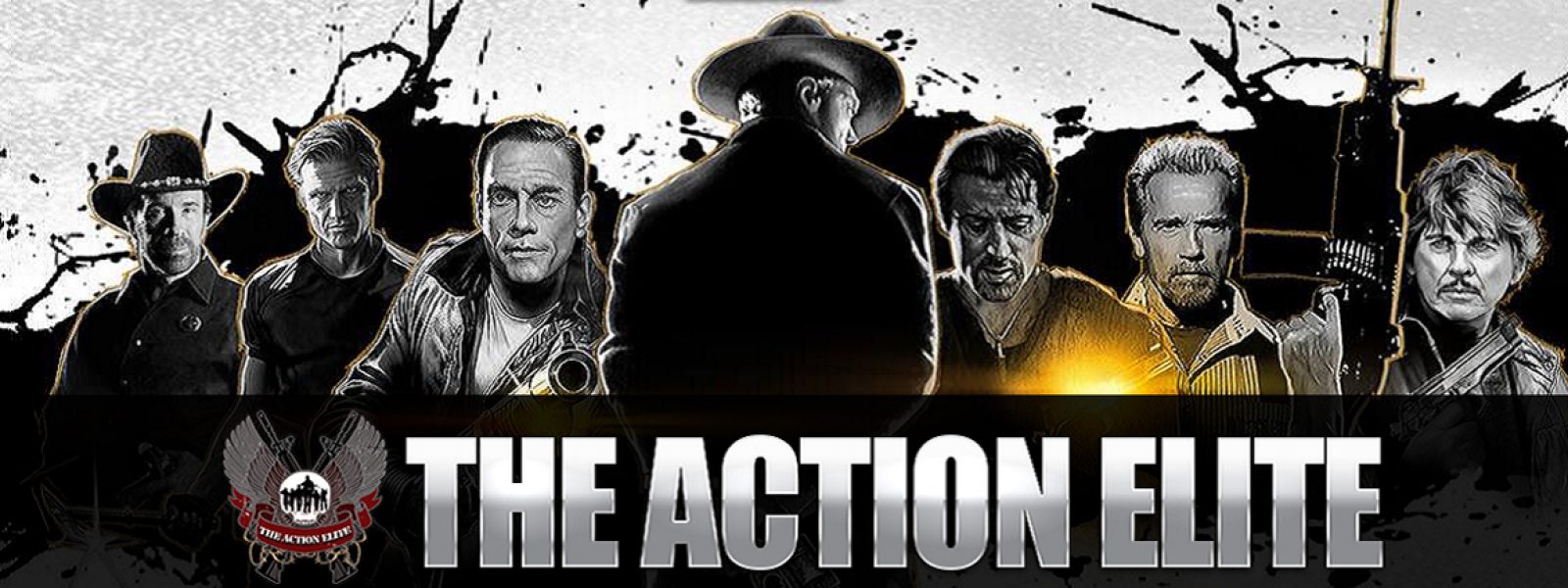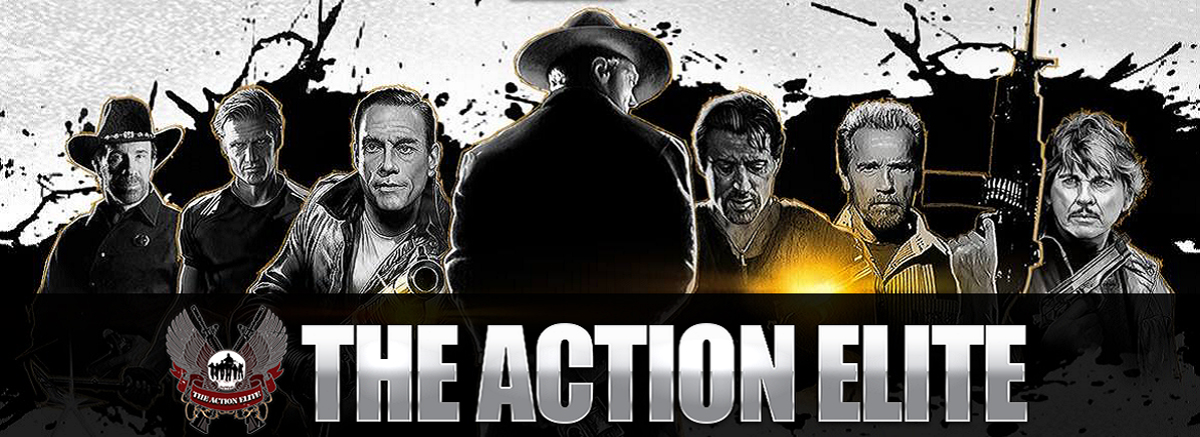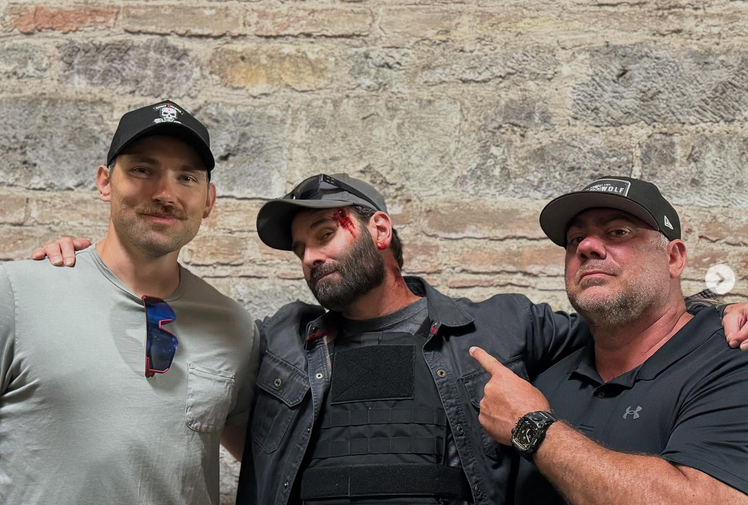The Terminal List: Dark Wolf is the newest chapter in the high-intensity action franchise based on the best-selling books by Jack Carr (former US Navy SEAL).
Thom and Chris led a dream team of elite stunt performers from the U.S., Hungary, Spain, France, and the UK. They also worked with military advisers to ensure the action was authentic and avoided the Hollywood tropes.
Thom and Chris stopped by to chat about the show with us.
We’re going to be talking with The Terminal List: Dark Wolf. So, I believe the show was filmed in LA, Budapest and Croatia. Can you talk about what it was like shooting in those locations and then how it differs from country to country in terms of logistics?
Thom: Yeah, I mean, LA is pretty easy because it’s the heart of the business still, kind of. Chris and I know a ton of people there. So, that one was pretty simple to get staffed up and prep and everything. It’s quite an amazing adventure going international. I’ve worked in Asia. It was my first time in Europe. I don’t remember if Chris has worked. I think you’ve worked over there before.
Chris: Yeah.
Thom: But we had some people, obviously, from Hungary. We had people from Spain, from France, from the UK. I mean, all over Europe and ended up putting together an amazing international team that just crushed it. But learning the ins and outs of different international contracts was a bit of a challenge, too, because none of them are the same either. So, we have our SAG-AFTRA performers we brought over. Then you got the people in Hungary and Spain and France are similar but different from them. So, it was actually a lot of fun kind of learning the ins and outs of all the different facets of their deals, too.
Chris: Tom was really the logistic powerhouse and pulling a lot of those elements together and did an incredible job. He found all the best people in all the best places, LA, Budapest, Croatia, and really added just a lot of dimensions to our show. I just want to say thanks to Thom for that.
Thom: Well, it helps having friends in the UK, too, who can recommend a lot of really good people.
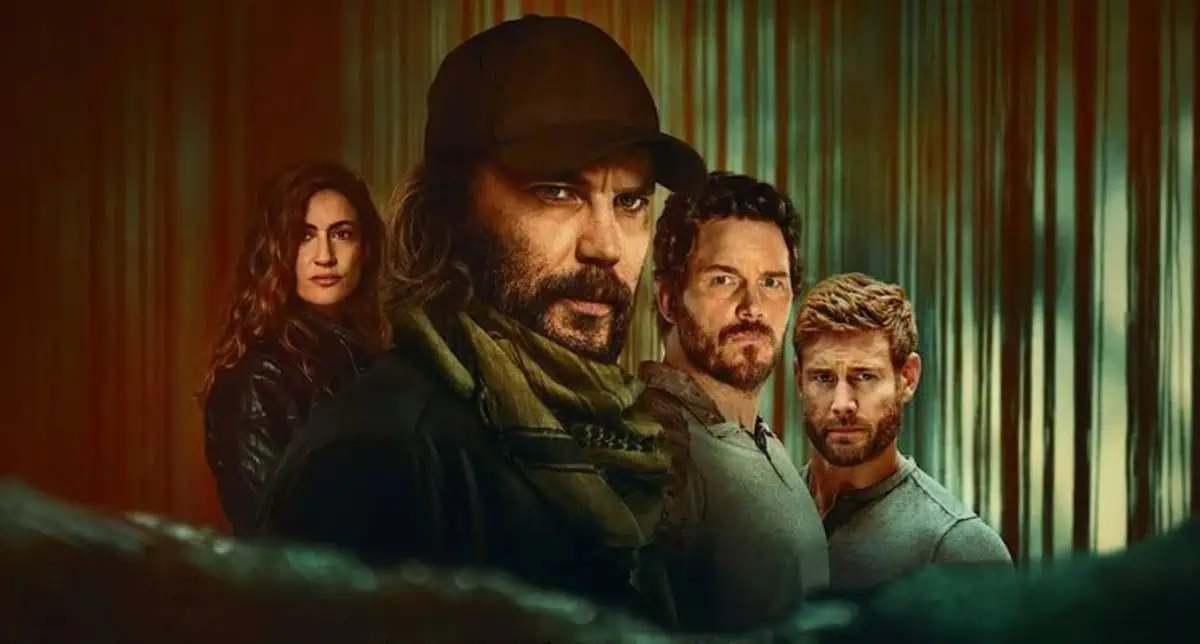
Can you discuss a little bit about collaborating with director Fred Toye to design this with a look and feel of the Middle East for the heroes to navigate through?
Thom: Yeah. First of all, Fred, that is one of my favorite directors in the business now. That dude is such a gem and he has such a clear, amazingly beautiful vision that he was inclusive with us. Anytime he talked to Chris and I, he explained what he wanted. He’s all excited and he was like, “okay, what do you think? What do you want to add here?” It was very, very welcoming. I was second unit directing the first episode and I’ll never forget; he walks up and he just puts his hands on my shoulders. He was like, “you’re going to help me create Iraq”. He goes, I need you to go around and just shoot things; I was doing a lot of vehicle stuff, but he wanted me going out just shooting, establishing stuff too. And he’s like, “you got to just help me make this look amazing”. And it was just awesome. The whole show’s like that from top to bottom; it really sets the tone for everyone’s got a good opinion. “The best answer wins and just bring it, bring your A game”.
Chris: Yeah, I got to really pitch, I mean, kind of as the look and feel of Iraq, I know nothing about it, but we had a lot of veterans on our show that to my credit and to Tom’s credit, we listened to a lot. And their opinion mattered, you know, more than anything else, because we were going for authenticity. So, we really, really leaned into their experiences and tried to make every detail that we had influence over match what their experience was.
You worked with specific military advisors to ensure all tactical realism as well…
Chris: Yes. On the first episode, that bridge sequence that was built out by Ray Mendoza, former Navy SEAL. He actually directed warfare with Alex Garland.
Yeah, the A24 film. It was awesome.
Chris: Wonderful, wonderful. If your readers haven’t seen it, they absolutely should. He brings a level of authenticity and attention to detail that I have not seen from anybody else. And he has a technical knowledge of film and encyclopedia knowledge of film that he can communicate exactly what he wants and why he wants it that way, and why it’s a good idea to do it that way. According to what Fred also has to deal with as the director. So, it’s a very good working relationship with our tactical advisor, Ray Mendoza, Jared Shaw, one of the EPs and writers on the shows. He’s a former Navy SEAL, and he was kind of one of our four-star generals, also keeping an eye on all those things. And Max Adams as well, one of the writers, EPs. We just had a great team of veterans looking out for all these details.
The cast all really look the part as well. How long was their training to prepare for these roles? Did they go to like a boot camp or anything like that to prepare?
Thom: Yeah, I mean, from day one, you would see any number of the actors going around the production office with replica weapons and Ray and Jared working drills up and down the hallways, coming into our office. They’d come clear our office, but they put in the work. They really did. And like Chris said, Ray and Jared are really, and Max too, are just geniuses about this. They’re so good with both, obviously their military background, but understanding how to translate it to film and still make it look fantastically real. And everyone made time for all the cast to put in rehearsal and training time because they were all in too. They wanted to look authentic and really do service to all of our military. All the actors bought in deep into the authenticity piece and they were always asked questions like, “why do I do it like this? Why this? Why this?” Just because they wanted to know the why behind these things. So, they wanted to do it right and it was really cool to see that.
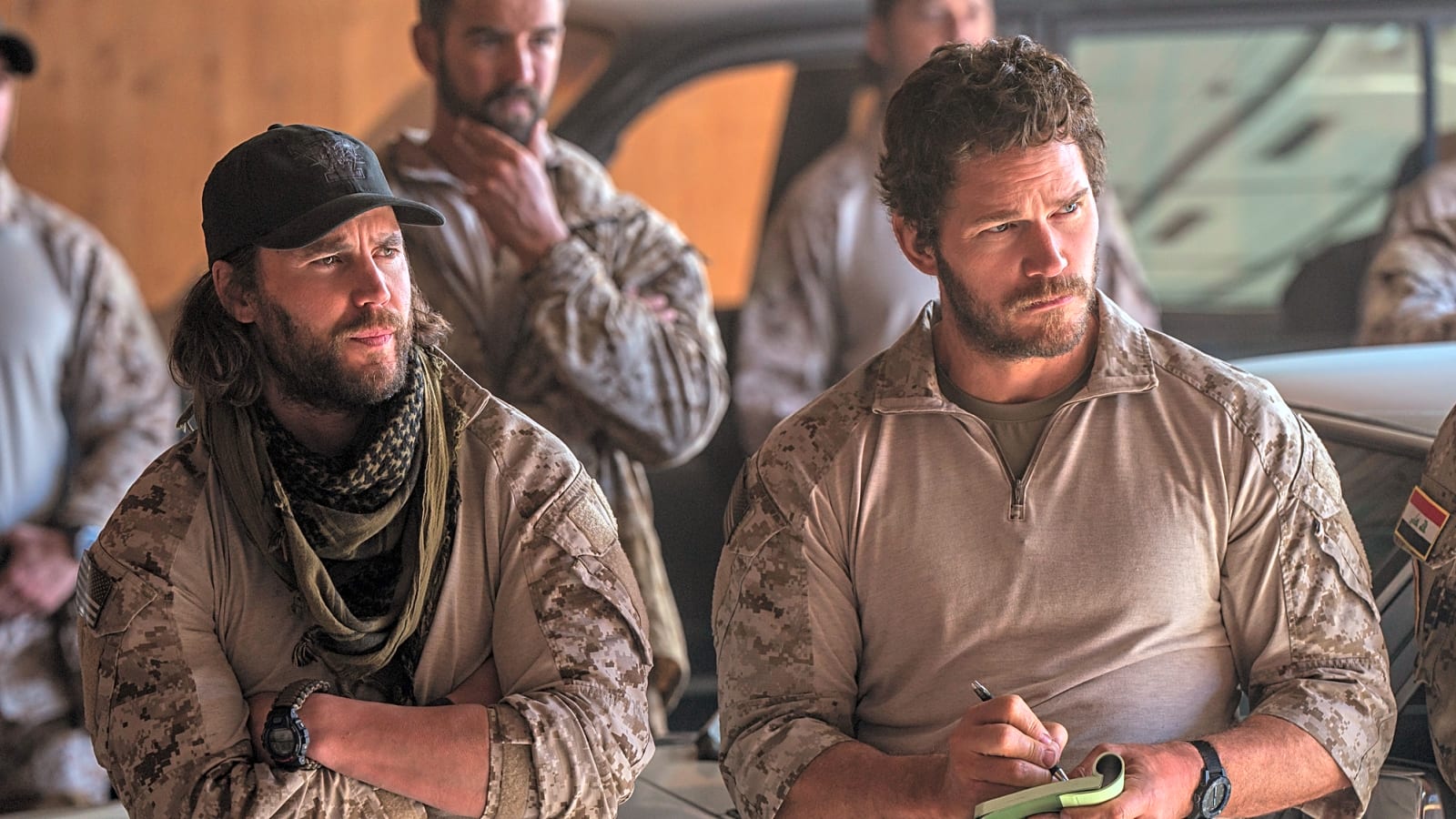
How challenging is it to build and rehearse the action sequences and the actual filming locations rather than rehearsing in a gym?
Thom: Well, we didn’t always use the locations. Chris and I still laugh about this all the time. We had a giant parking lot. We had a gym we would go to for some of the smaller intimate stuff, but the big sequences like the bridge, for example, we mapped out. We got all the dimensions of where the bridge is going to be, where the cars were going to be, where the people were going to be and it was all mapped and roadblocked out. And once we got it done with the stunt team and with Jared and Max and Ray out there, then we brought the actors in and put them through their paces. So, it was very large scale in the rehearsals, which was fantastic, like to scale. And then there were some places like the hostel, which was just in the episode today, where Chris and Jared and the team were in there like for weeks getting it ready. And it was a major collaboration too. I think a lot of the effort not only was in the rehearsal time, but in the time we took to go inter-departmentally to everybody that would ultimately touch this piece to kind of figure out what this space looks like. We talked to locations. What’s our location? We talked to our production designer. What’s going to be in this space? Can we get a table that breaks? Can we get glass? What do we do? That art department and all these things so that when we go and we tape it out on the concrete, we have a very good representation of what that’s going to be. It’s not a guess. And that is something that’s different on this show than most shows. Most shows, they kind of put us in a stunt gym and we build like a box representation and we do a mock-up. But that’s all it is. Because once you get in the space, all of a sudden you realize, oh, the dimensions are different. Oh, there’s actually stairs here where we’re supposed to do this major throw. But because we had all that stuff mapped out beforehand, we had already worked out all the kinks with all the other departments that when it came time to actually put it on through its paces in the space, most of the kinks were already worked out. So, when we went to picture, there were no hiccups.
Chris, I know you have doubled for Chris Pratt for several years now. One of my friends Adam asked me this today. He said, whenever you’re a stunt double, are you working for the actor or the studio? Like who is it who employs the stunt double? I never thought of that before…
Chris: Well, for me, I’m in Chris’s contract, mostly, and my job is to make him look good. My job is to keep him safe, make him look good. So, I consider him, if there’s a difference of opinions about how something should be captured, I’m going to go with Chris’s opinion.
Going back to the start there where you worked with stunt professionals from the US, UK, Spain, Hungary. Can you talk about just working with and managing the diverse, high caliber team?
Thom: Yeah. One of the funniest things is, I think the biggest one was probably in the next episode when we’re out at the airfield. We had people from all those countries. So, translation sometimes was a bit of a time suck, but it made it very interesting because not all of them spoke English. Most of the Hungarians understood it pretty well. And the Spanish and French, I’d say most of them, but there’s, you know, I’d say 20, 25%, we’d have to have full translations going. So, that was the only real kind of drawback. But our assistant Davide spoke, what, six languages? We had other people on the crew and the Hungarian crew as I’m sure you understand, most people in Europe speak multiple languages. So, it was handled really well, especially us lowly Americans where most of us just speak English (laughs). And it was actually pretty efficiently done and made it kind of fun, just trying to figure out, picking out words here and there that they were speaking to and trying to learn bits of their languages. And I don’t think there was any negative to it. I really enjoyed the whole thing. Okay.
What about you, Chris?
Chris: Absolutely the same. I think each one of the groups that we worked with and the people that we had were just world-class. I’d love to work with them anywhere in the world and so, it was easy to communicate and work with them.
I always ask this to any time I speak to stunt or fight coordinators, whenever you’re shooting an action or a fight scene, do you both feel that it should always be either progressing the story or the character and not just action for the sake of action?
Thom: Oh, a hundred, a hundred percent. One of my biggest pet peeves is just people trying to show off and get something in to get it in. Oh, this is going to be awesome. This is gonna be rad. No, our job is to service the storyline. It’s to service the veterans we’re doing the show about and to make sure the characters have a good progression, a really good fight scene, a really good battle scene, even a car chase. It has to have a storytelling component.
It has to drive the story forward. And so you understand what’s going on otherwise you’re going to lose people. Folks are going to watch it and just tune out and be like, Oh, it’s another high-speed chase. Okay. It’s another explosion. People flying everywhere. So, Chris and I were very involved with all of our writer, producers, the directors, constant meetings about how to make sure the action fit into it and didn’t distract from it. In fact, there was, yeah, there was a lot of conversations had with the actual actors and our tech advisors and stuff, and basically making it feel personalized that each character had their way that they moved made sense for who they were. In fact, there was moments where we actively fought to take choreo out that was scripted in that just didn’t make sense. Like it just stretched believability. And so we really simplified things and made our jobs easier, but less fun in the process, but I think helped the story and the characters. I’ll give you a great example. And in the third episode, the train, it was supposed to be a big fight on the train. It was actually Taylor Kitsch was talking to us and he was like, “it just feels weird”. And Chris and I had been banging our heads against the wall because it wasn’t gelling. It wasn’t flowing well. And Taylor’s like, “why don’t I just shoot the guy? “And we’re like, “yeah, that’s what your character would do. And it’s what it turned into”. And it was so simple, but it worked so well. And it’s really shocking too.
And it worked for Indiana Jones in Raiders of the Lost Ark.
(laughs) Yeah, exactly. It works for Indiana Jones.
Thank you so much for taking the time. I’m looking forward to watching the rest of the season.
Thanks again so much. Bye now.


